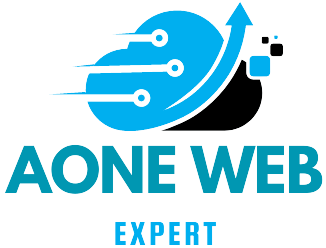No indexing means no visibility. If search engines can’t find your content, neither can your audience. Follow these steps to get your pages indexed and boost your presence in search results.
Frustrated by “Discovered – Currently Not Indexed” in Google Search Console? You’re Not Alone.
If you’ve ever spent hours creating high-quality content only to see it ignored by Google, I get it—it’s beyond frustrating. Too often, SEO focuses on rankings, but before your content can rank, it has to be indexed.
Think about it: whether your content appears on search engine results pages (SERPs), AI-generated results, Discover, Shopping, News, or even AI tools like ChatGPT, none of it matters if it’s not indexed.
Unfortunately, indexing issues are all too common.
From our experience at Aone Web Expert, working with large-scale websites, about 9% of valuable deep-content pages (like products, articles, and listings) never get indexed by Google or Bing. That’s a lot of wasted potential.
So how do you make sure your content gets indexed?
These nine proven steps will help you get your pages into Google and Bing’s index faster and maximize your site’s visibility.
Step 1: Audit Your Content for Indexing Issues
A structured sitemap is key to understanding what’s being indexed and what’s slipping through the cracks.
In Google Search Console and Bing Webmaster Tools, submit separate sitemaps for each page type:
✅ One for products
✅ One for articles
✅ One for videos
✅ And so on
Once submitted, you can track which pages aren’t getting indexed—and, more importantly, why.
The 3 Biggest Indexing Roadblocks:
1️⃣ Technical SEO Issues – Things like:
- Pages blocked by robots.txt
- Incorrect canonical tags
- Noindex directives
- 404 errors or excessive redirects
👉 Fix: Remove these pages from your sitemap.
2️⃣ Low Content Quality – If Google sees your page as thin or duplicate, it won’t index it.
👉 Fix: Improve content depth, relevance, and uniqueness.
3️⃣ Processing Issues – This is the trickiest category, leading to dreaded errors like “Discovered – currently not indexed” or “Crawled – currently not indexed.”
👉 Fix: It takes time, but optimizing internal links and improving crawl signals can help.
🔎 Pro Tip: Use your sitemap indexing data as a benchmark to measure progress.
Step 2: Submit a News Sitemap for Faster Article Indexing
If you publish blog posts or news-style content, submitting a News sitemap can help speed up indexing—especially for articles published in the last 48 hours.
💡 Bonus: Your content doesn’t need to be “news” to qualify!
Step 3: Improve Product Indexing with Google Merchant Center
For ecommerce sites, submitting your product catalog to Google Merchant Center can improve indexing and visibility.
💡 Keep your product listings updated so Google continuously crawls them.
Step 4: Submit an RSS Feed to Speed Up Crawling
Google and Bing love fresh content. An RSS feed (which only includes new content from the past 48 hours) helps search engines find your latest updates faster.
📌 Pro Tip: RSS feeds are crawled more frequently than traditional XML sitemaps. If possible, integrate WebSub to enhance real-time indexing.
Step 5: Use Indexing APIs for Instant Discovery
Take advantage of Google Indexing API (limited to 200 requests per day) and IndexNow API (unlimited for Bing and Yandex) to instantly notify search engines about new or updated pages.
🔎 Does Google officially allow this for all pages? No. But many SEOs still test it—your call. 😉
Step 6: Strengthen Internal Links for Better Indexing
Google and Bing prioritize URLs with strong link signals. The better your internal linking, the faster your content gets discovered.
Here’s a game-changing trick:
✅ When you publish a new page, check if Google has crawled it.
✅ If you see “Discovered – Not Indexed”, add it to a homepage feed of non-indexed pages.
✅ Once indexed, remove it from the homepage.
💡 This creates a real-time indexing system—leveraging your homepage’s authority to boost new pages.
Step 7: Block Low-Value Pages from Search Engines
Too many junk pages (like search results, tracking parameters, or duplicate pages) can hurt your site’s overall quality.
🚫 Block these using robots.txt and add rel=”nofollow” to links pointing to them.
🔎 Why? Even if a page is blocked in robots.txt, Google might still index it if it has internal links or traffic.
Step 8: Use 304 Responses to Help Crawlers Prioritize New Content
Most crawlers waste resources re-downloading pages that haven’t changed.
Instead of serving a 200 response code, return a 304 Not Modified response for unchanged pages.
✅ Benefit: Google and Bing can then focus their resources on indexing new content faster.
Step 9: Manually Request Indexing for Hard-to-Index Pages
If a critical page refuses to get indexed, manually submit it through Google Search Console.
📌 Important: You’re limited to 10 manual requests per day, so use them wisely!
💡 For Bing, the IndexNow API is more effective than manual submissions.
Final Thoughts: Maximize Your Site’s Visibility with Aone Web Expert
If your content isn’t indexed, it might as well not exist. Don’t let valuable pages go unnoticed.
At Aone Web Expert, we specialize in helping businesses get their websites indexed, ranked, and optimized for success. Our strategies ensure your content gets the visibility it deserves—whether on Google, Bing, or AI-powered search results.
Need expert SEO help? Let’s make your website unstoppable! 🚀
📞 Contact us today at Aone Web Expert!
Sharing is Caring!
